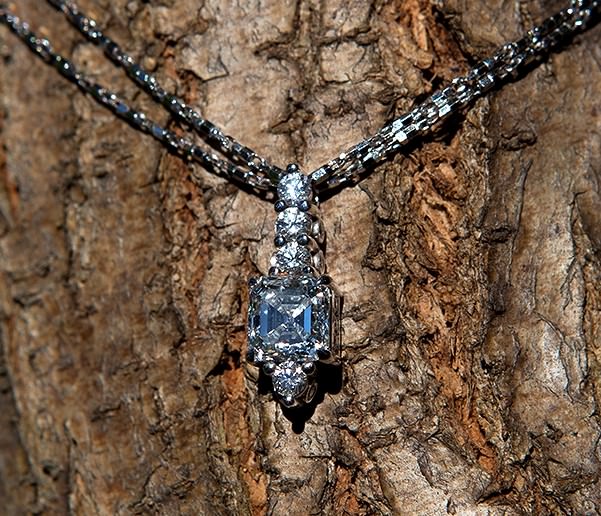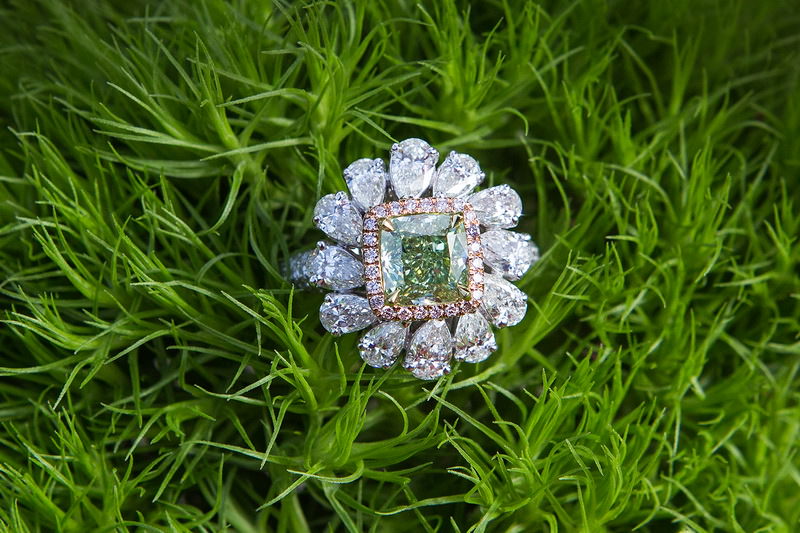-
ADVANCED DIAMOND ADVICE
Finding your Perfect DiamondThe beauty and value of any diamond depends on the brilliance, scintillation and fire achieved by the physical properties of diamond in combination with its colour, clarity, cutting style and carat size. Of the four Cs, carat weight is the only objective criteria. Assessing all other factors requires skill and years of experience.
Every stone is going to be different. With clarity, countless different feature combinations can be assigned the same grade and assessing the impact of those features is indeed a high skill. It takes graders years to learn the full range of features and how they fit into commercial grades. This is true with colour also. Two diamonds can share the same colour grade yet appear different by having a different draw or tone of colour. Some graders can spend their entire career and never develop the level of consistency necessary for confident grading.
It is not easy. And yes, there are good graders and bad graders. There is good and bad in any profession. This is understandable. What is not understandable is the so called "easy graders" and "hard graders" who are respectively lenient or overly harsh on stones. A diamond has a grade to which it belongs, being lenient or harsh just makes a grader wrong. Unless you are in the hands of a master grader you trust it is wise for all consumers to ask for a certified diamond with papers from an accredited laboratory: GIA, HRD, IGI, Gubelin or a local laboratory of good standing. Mistakes can happen here too but they're very rare. You also have to trust your expert to confirm the stone and all grading. I never transact a diamond with erroneous laboratory grading, even if that grading reports the diamond to be better that it is. Some sellers consider this a bonus day: getting an F colour grade on a stone they know to be G colour. For others who respect the trade, they point this out and do not take advantage of the client with it. Laboratory grading is a tool: good for identification and confirmation but you have to know enough to match the stone to the paper. Whole and blind reliance on laboratory grading is ill-advised.
So you have the basic grading correct, now what?
Grades represent a range and there is a difference between stones at the top of a grade and stones at the bottom of a grade. Two diamonds each 1.00 carat, F colour and VS2 with very good cut can range in value up to 30-40% or more. Notice I said value and not price. A portion of this difference is attributed to variations within the grade boundaries of clarity, colour and cut, and a portion is due to factors specialists consider that are additional to the 4 Cs. If you're merely buying off a certificate with no expert personally assisting you these two diamonds are going to be priced the same. Diamonds are priced in weight categories cross-referenced to clarity and colour with deductions taken for deviations from well-cut. All salient variables cannot be included because it would make the table unwieldly but the more important reason is that a real assessment of value requires an experienced eye. That is the irreplaceable edge; knowing where a diamond sits within its grade range and what affect it and the other considerations have on beauty and value. This is the subtle art of valuing and it is the exclusive domain of experts.

Asscher cut diamond pendant from the DEEDEE Collection
When experts transact diamonds, the higher priced stone is going to look better even where the 4 Cs - clarity, colour, cut and carat - are the same. This holds true all the way down the supply chain where both buyer and seller are real experts but it commonly ends before the final transaction to the consumer. This is because the person selling to the consumer typically has far less experience, they rely heavily on laboratory or third-party grading, they sell based on inventory pressure or store policy, and their inventory is bought based on price, not beauty and value. A harsh reality is that margin is maximized at that level by buying the weakest stone of a grade which they can sell as that grade to consumers under the mistaken impression, for example, that all SI2s are alike.
Each diamond has its own character. Look at it like this: the 4 C's are like height, weight, hair colour and eye colour on a person. They give you some idea of what an individual will look like but not the whole picture. Two men 6 feet tall, 180 pounds, light brown hair and blue eyes - one is Matthew McConaughey and the other Benedict Cumberbatch. They have different appearances, different charms, different strengths, and yes, different weaknesses.
There must be generalities, are there not?
Yes, some. But they're relative. Consider this: a VS diamond will always look more beautiful than an SI2. Sounds reasonable right? But what if the VS was H colour and the SI2 was D colour? What then? It's not true anymore. All things being equal, a better single grade should mean a better appearing diamond but with diamond, very seldom are all things equal.
Is there a most important of the 4 Cs?
Yes, there always is but it's not the same in every situation. It depends. With an emerald cut, it makes sense to weigh clarity as most important because the large window facet on top will reveal inclusions readily; but with oval shapes, cut will be a big factor because the length to width ratio dictates that a poor cut oval is a lifeless diamond; and if a client is enthralled with the whitest diamond then colour becomes the most important. And in all these cases, none of the factors stand in isolation.

Earrings featuring round, pear and oval brilliants from the DEEDEE Collection
Giving general advice such as recommending VS clarity and G colour at a minimum, stating that one should never buy an I1, asserting that any colour better than H is white enough, advising against fluorescence, all miss the greater point. And there is no end to this unreasonable free advice. Let me state this, and if you hear nothing else except this you will be way ahead of the game: there are very few absolutes with diamond. These opinions are what they are typically because they play to the strengths (or weaknesses) and inventory of diamond sellers. Take fluorescence for example, 90% of the time it does not impact the appearance of the diamond. About 25-35% of diamonds show fluorescence exhibiting a glow in response to UV light, and 95% of the time the colour is blue which can actually aid appearance in select cases. So why is it commonly advised to avoid it? Because of the other 10%. Many sellers buy inventory blindly from certificates alone and avoiding fluorescence is a necessity because they cannot predict how it might affect a stone when they're not there to look at it in person.
The Elephant in the Room - the 5th C
Recommending any grade in the absolute is a disservice to a client. Absolutes don't matter because it implies preferences and money aside. And preferences and money are never aside. That right there is the 5th C - Cash - the money, the financial outlay you are comfortable investing. Many diamond sellers add a 5th C to their marketing - Character or Confidence, something to charm you like that, but the real truth is the 5th C has always been the money. Avoiding this reality is the way to hurt a client the most. Looking for absolutes will result in a less than optimal diamond selection for you. And this is about you. It's your diamond.
Any worthwhile advice has to be dependent on your investment in the diamond and what you value most and this is an individual thing: maybe its size, maybe it's a cut style, maybe its colour. So here comes the 6th and final C: Concession. Unless you are of unlimited resources and you also choose to allocate those unlimited resources to your diamond you are going to have to prioritize. You are going to make concessions. Notice I didn't say compromises. I hate the word compromise because it implies you accepted something inferior and there is a level of dissatisfaction with your decision. Concession on the other hand is a graceful act resulting in the best outcome. You should neither notice nor regret a concession if it's made wisely.

Fancy green diamond ring from the DEEDEE Collection
Selecting a diamond is somewhat like the art of critiquing movies. It is founded on knowledge of accepted cinematography principles but final judgement is always based on the subjective impression the movie leaves with the critic. As such, it makes little sense to state that a certain set of parameters is what everyone should want in a diamond. But, this is not to say that it makes no sense to determine which parameters offer maximized optical performance and yield the more beautiful diamond. That will be fact. So knowing what you value most, and some clients know only their financial comfort and nothing else, it gives us a starting point and from there I know how to balance the other factors in the way that maximizes the beauty of your diamond. And when you look at your diamond, you will never even notice that it's not objectively perfect in every way because it's perfect for you.
Every single factor in a diamond has an influence on every other single factor and knowing how this comes together in one complete impression is the all-important.
Contact my office to book a consultation to discuss your needs

Loading...
